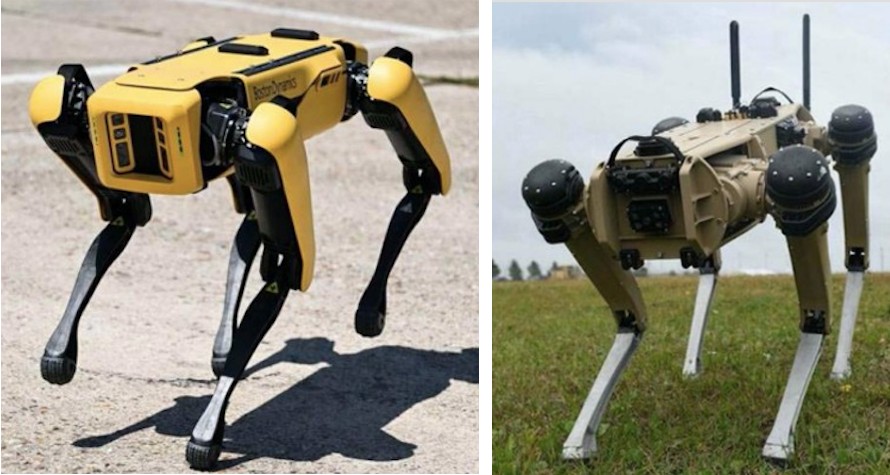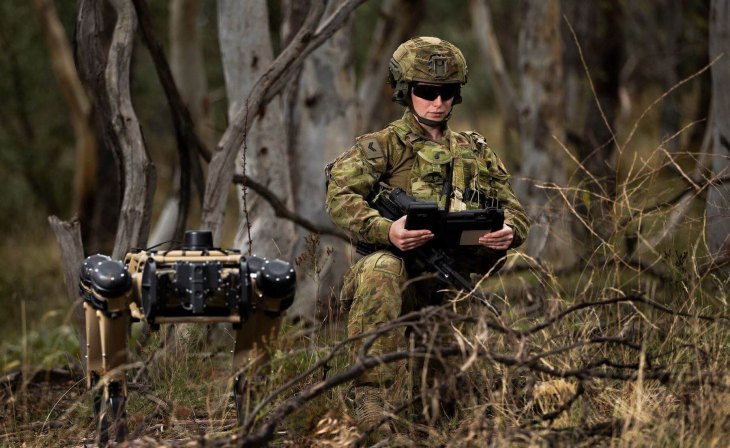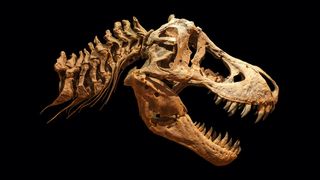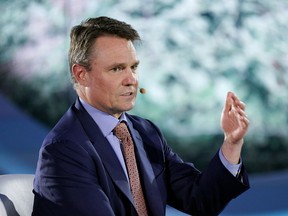Ghost Robotics responds to Boston Dynamics lawsuit

Boston Dynamics’ Spot (left) and Ghost Robotics’ Vision 60.
Ghost Robotics has responded to the patent infringement lawsuit recently filed by Boston Dynamics.
Earlier this week, we learned that Boston Dynamics is suing competitor Ghost Robotics for allegedly infringing on seven patents related to the former’s Spot quadruped robot. Filed in Delaware Federal court on November 11, 2022, Boston Dynamics takes issue with both Ghost Robotics’ Vision 60 and Sprint 40 quadrupeds.
Boston Dynamics was founded in 1992 and has worked on a variety of legged robots, both two-legged and four-legged versions. Ghost Robotics was founded in 2015 and has focused exclusively on quadrupeds.
According to the complaint, “Boston Dynamics’ early success with the Spot robot did not go unnoticed by competitors in the robotics industry, including Ghost Robotics.”
Here’s what Boston Dynamics told The Robot Report earlier this week via email: “We do not comment on the specifics of pending litigation. Innovation is the lifeblood of Boston Dynamics, and our roboticists have successfully filed approximately 500 patents and patent applications worldwide. We welcome competition in the emerging mobile robotics market, but we expect all companies to respect intellectual property rights, and we will take action when those rights are violated.”
Ghost Robotics just sent the following statement to The Robot Report:
“Founded in 2015, Ghost Robotics has quickly grown to become the number one supplier of legged robots to US and Allied Governments. The flagship Vision 60 robot offers best-in-class endurance, speed, weather protection, and field repairability. It is the only legged robot on the market that is capable of operating in all environmental conditions for sustained, real-world missions to improve efficiency and save lives.
“Evolving from close customer collaboration, coupled with exceptional innovation at Ghost Robotics, these capabilities have led to rapid adoption by US Air Force, Army, and Special Forces as well as Allied Governments including the UK, Australia, Israel, Germany, Singapore, and the Republic of Korea Blue House.
“Ghost Robotics was born out of the PhD research of CTO Avik De and CEO Gavin Kenneally, under the tutelage of the esteemed Prof. Dan Koditschek at The University of Pennsylvania. Prof. Koditschek is a pioneer in the field of legged robots and holds the patent (jointly with his former students, Martin Buehler and Uluc Saranli) for the first battery-powered, dynamic legged robot, RHex (US6481513B2, filed March 14, 2001).
“Ghost Robotics’ success has not gone unnoticed by Boston Dynamics. Rather than compete on a level playing field, the company chose to file an obstructive and baseless lawsuit on November 11th in an attempt to halt the newcomer’s progress. Boston Dynamics is drawing on their considerably larger resources to litigate instead of innovate.
“Ghost Robotics strongly believes that fair competition drives the market and looks forward to a thriving legged robot industry, for the benefit of humanity.”
These are three of the first quadruped robots to ever be available commercially. We will keep an eye on how this plays out in court. Other quadruped makers include ANYbotics (Switzerland) and Unitree Robotics (China).
Ghost Robotics fires back against ‘baseless’ Boston Dynamics lawsuit

A legal dispute over robotic patents is devolving into a war of words, as Ghost Robotics fires back against Boston Dynamics. The Philadelphia firm calls the suit both “obstructive and baseless” in a statement sent to TechCrunch. It notes, in part,
Ghost Robotics’ success has not gone unnoticed by Boston Dynamics. Rather than compete on a level playing field, the company chose to file an obstructive and baseless lawsuit on November 11th in an attempt to halt the newcomer’s progress. Boston Dynamics is drawing on their considerably larger resources to litigate instead of innovate.
Ghost’s statement, in which it refers to itself as “the number one supplier of legged robots to US and Allied Governments,” follows press reports of a lengthy suit filed by Boston Dynamics in a Delaware court. It adds that the company has its roots in its own legged robotic research, writing, “Ghost Robotics was born out of the PhD research of CTO Avik De and CEO Gavin Kenneally, under the tutelage of the esteemed Prof. Dan Koditschek at The University of Pennsylvania. Prof. Koditschek is a pioneer in the field of legged robots and holds the patent (jointly with his former students, Martin Buehler and Uluc Saranli) for the first battery-powered, dynamic legged robot, RHex (US6481513B2, filed March 14, 2001).”
On Tuesday, Spot’s maker told TechCrunch that it doesn’t comment on pending lawsuits, but added,
Innovation is the lifeblood of Boston Dynamics, and our roboticists have successfully filed approximately 500 patents and patent applications worldwide. We welcome competition in the emerging mobile robotics market, but we expect all companies to respect intellectual property rights, and we will take action when those rights are violated.
In the suit, Boston Dynamics cites multiple letters, including cease and desists, calling on Ghost to suspend the manufacture of its own four-legged dog robots over several alleged patent violations.
It’s not the first time to two companies have butted heads. Ghost made national headlines after images surfaced of one of its dog robots sporting a SWORD Defense Systems Special Purpose Unmanned Rifle (SPUR).

A drawing from Boston Dynamics’ suit. Image Credits: Boston Dynamics
The company’s then-CEO Jiren Parikh (who passed away in March of this year) told TechCrunch at the time,
We don’t make the payloads. Are we going to promote and advertise any of these weapon systems? Probably not. That’s a tough one to answer. Because we’re selling to the military, we don’t know what they do with them. We’re not going to dictate to our government customers how they use the robots.
We do draw the line on where they’re sold. We only sell to U.S. and allied governments. We don’t even sell our robots to enterprise customers in adversarial markets. We get lots of inquiries about our robots in Russia and China. We don’t ship there, even for our enterprise customers.
Last month Boston Dynamics joined a number of follow robotics firms in an open letter condemning the practice of weaponizing robotics. The letter notes, in part,
We believe that adding weapons to robots that are remotely or autonomously operated, widely available to the public, and capable of navigating to previously inaccessible locations where people live and work, raises new risks of harm and serious ethical issues. Weaponized applications of these newly-capable robots will also harm public trust in the technology in ways that damage the tremendous benefits they will bring to society.
Boston Dynamics is seeking unspecified damages in its suit.
The U.S. Air Force was reportedly testing Ghost Robotics' robot dogs in 2021.
By Kevin Hurler
Published Wednesday
Boston Dynamics wants to ensure its place in the creepy robot dog market. The tech company has filed a complaint against Philadelphia-based Ghost Robotics claiming that the latter has infringed on Boston Dynamics’ patents.
The complaint, which was obtained and reported on by The Register, alleges that Ghost Robotics copied Boston Dynamics’ schtick of a semi-autonomous robot dog with their Vision 60 and Spirit 40—a robot that resembles Boston Dynamics’ Spot. Boston Dynamics points out in the 110-page complaint that the way Vision 60 and Spirit 40 collect sight information, process environmental data, and even climb stairs could be an infringement of several patents the MIT spinoff has gotten approved since its founding in 1992. Boston Dynamics is also demanding a jury trial.
“Boston Dynamics, with its early roots in the robotics industry, has been and continues to be a pioneer and leading innovator in developing quadrupedal and bipedal robots,” the complaint reads. “Boston Dynamics’ early success with the Spot robot did not go unnoticed by competitors in the robotics industry, including Ghost Robotics.”
The Register points out that Ghost Robotics—and their terrifying robot dogs—have visited Tyndall Air Force base in Florida in 2021 to “add an extra level of protection,” according to an Air Force press release. Ghost Robotics also visited Nellis Air Force Base in Nevada in 2020 to test out their dogs according to a Business Insider article, which also reports that the company received an Air Force contract in April of 2020.
Much the same way dogs are man’s best friend, Boston Dynamics and Ghost Robotics are law enforcement and armed forces’ best friends. As Gizmodo has covered extensively in the past, Boston Dynamics has cashed in on national security—having previously partnered with the Defense Advanced Research Projects Agency on their Atlas disaster response robot. Ghost Robotics has also been teaming up with the armed forces as their tech is slated to help patrol the U.S. southern border.
But when Boston Dynamics’ Spot originally went on sale, there was a can’t use it for evil clause. The company has been adamant about its robots not being used for weapons or to harm people, where as Ghost Robotics seems totally happy to go all-in on military. Still, the U.S. Military’s Defense Advanced Research Project Agency was an early backer of Boston Dynamics, but the company has since pivoted its focus to more civilian spaces. With that in mind, Boston Dynamics could be feeling the heat from a competitor in a space they typically control, hence the complaint.




:format(jpeg)/cloudfront-us-east-1.images.arcpublishing.com/tgam/3F5K64A24FLDXKZXVM26X2XTI4.jpg)












